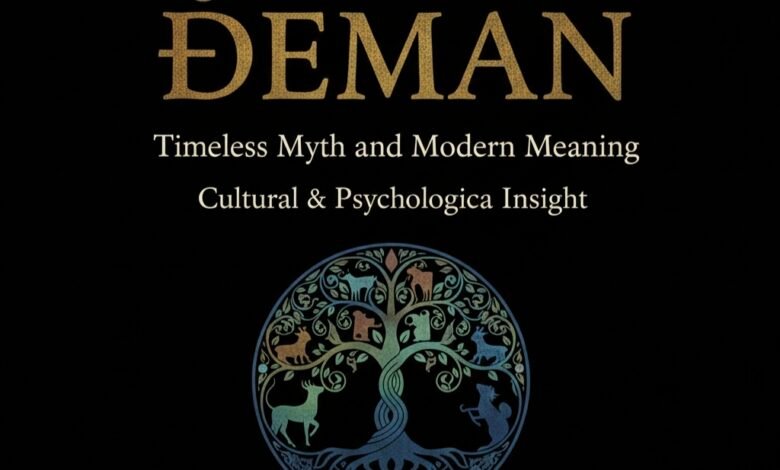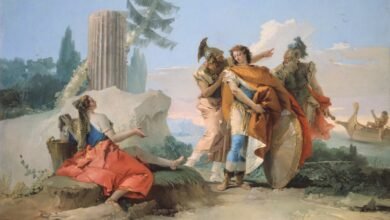Đeman: The Timeless Echo of Tradition and Transformation

Introduction
Every culture has words that seem to transcend time—words that echo with inherited wisdom, myth, or spirit. One such word is “đeman”, a term steeped in folklore, emotion, and mysterious power. Though rooted in ancient linguistic origins, đeman speaks to something deeply modern: the identity of the self in a rapidly shifting world. It’s a word few outside certain regions might know, yet it carries the universal essence of transformation—a concept prized both in ancient ritual and modern personal development.
In contemporary cultural conversations, đeman resonates as a metaphor for inner tumult, creativity, and resilience. As we enter an era where storytelling blends with psychology, and tradition meets technology, the mystique of đeman is making a quiet yet profound comeback. This article explores đeman with both reverence and analysis, offering a journey through time, thought, and cultural interpretation.
More than just a word, đeman is a prism—we see different colors depending on what angle we choose to observe. It connects the old with the new, the real with the mythical. From traditional stories whispered in the dark to modern reinterpretations in music, psychology, and digital art, đeman emerges as a beacon of complex identity and evolving meaning.
What Is “Đeman”?
At its core, đeman is a word entwined with folklore and duality. In certain Balkan and Southeast European cultures, the term is believed to refer to a spectral being—an unpredictable spirit caught between realms, neither entirely benevolent nor malevolent. More than a ghost, a đeman embodies the hidden struggles that go unspoken: inner demons, unresolved pasts, and the haunting echoes of ancestral trauma.
In modern reinterpretations, đeman transcends its folkloric roots. It becomes the archetype of internal conflict—representing the shadows we carry, the fears we avoid, and the memories that shape us. A đeman can be the past version of ourselves, still whispering in moments of self-doubt. Or it can represent the silent expectations imposed by society, culture, or family.
Artists and poets have rekindled the concept of the đeman in songs, paintings, and spoken word—using it as a powerful symbol for the emotional underworld. In its new form, đeman stands as a companion on the path to self-awareness. Not a force to fear, but one to acknowledge and learn from. In this sense, the đeman becomes a guide—an ancient presence helping the modern mind navigate complexity.
Đeman in Folklore: A Cultural Reflection
The earliest traces of the term “đeman” appear in oral traditions where it often occupies a paradoxical role—both feared and respected. Much like the trickster figures found in other mythologies, the đeman functions as a mirror reflecting human limitation and ambition. The đeman brings disruption, but through that disruption, transformation.
In traditional ballads told around firelight, the đeman sometimes embodies the spirit of a wronged ancestor or an unfulfilled vow. It roams forests or abandoned homes, whispering wisdom in riddles. The zaljenja—the ritual act of honoring such spirits—was not an act of appeasement, but of recognition. To accept the đeman was to accept the unfinished stories of the past.
These folklore representations served as a cultural coping mechanism. They allowed communities to personify collective sorrow or turmoil, creating a space where emotions could be processed communally. The đeman was not just a myth—it was an emotional landscape, a placeholder for the unspoken. In embracing lore, people learned to confront the intangible.
Today, revisiting these narratives offers insight into how ancestral cultures faced mental and emotional challenges long before psychology put names to them. Đeman folklore is not obsolete—it captures timeless human realities through metaphor, revealing how deeply interconnected myth and psyche truly are.
Đeman and Modern Identity
In the contemporary world, where identity constantly shifts and reinvents itself, the đeman becomes a potent symbol. In a time of inner fragmentation and the pursuit of belonging, đeman reflects the parts of ourselves we struggle to reconcile. Young people, especially in post-conflict societies or those navigating multi-cultural identities, often find themselves face-to-face with personal đemans.
Social media and digital storytelling have given Đeman a second life. On platforms like TikTok or Instagram, aestheticized depictions of personal demons and emotional transformation echo the archetype of the đeman. Rather than banishing their shadows, creators are exploring them—turning vulnerability into art, pain into poetry.
In therapy and self-development literature, we see similar metaphors. The idea of “befriending your demons” aligns closely with the ancient wisdom embedded in the đeman. An emotional breakthrough often requires engaging with the parts of the psyche that feel chaotic or frightening. The đeman is our reminder that liberation doesn’t come from avoidance; it comes from integration.
In this modern sense, đeman becomes a symbol of personal evolution. It stands for the shadow self—an aspect of Jungian psychology—urging us to face what we suppress. The more receptive we become to our internal đemans, the more authentic, grounded, and empowered our sense of identity becomes.
Digital Đeman: Myth in the Metaverse
As we navigate into a digitized future, the concept of đeman reimagines itself through virtual forms. Digital artists are resurrecting folklore, weaving it into pixelated landscapes, immersive VR worlds, and generative AI experiences. The digital đeman is not a specter haunting a rural tale—it is an avatar within a simulation, a creature of infinite code that adapts to the viewer’s emotional state.
In this form, đeman enters the metaverse as both a teacher and a test. Imagine a VR experience where the đeman appears only when you lose focus or courage—its presence pushing you deeper into self-discovery. Through interactive narratives, it becomes a gamified version of inner exploration.
Even in the realm of AI art and NFTs, đeman’s symbolism resonates. Digital collectors are drawn to pieces that evoke emotion, isolation, or transformation. A dark figure surrounded by light—a đeman-like shape—symbolizes the continuing pull of myth in the tech-driven culture.
More than nostalgia, the return of the đeman builds bridges between humanity’s most ancient instincts and its most advanced tools. In a space so saturated with information, myth becomes grounding. The đeman offers us space for introspection within worlds designed for distraction.
Đeman in Literature and Music
Echoes in Poetry and Prose
The đeman is woven into modern creative writing as an emotional motif. You find it in the metaphorical language of poets, especially those reflecting on displacement, trauma, or generational grief. Through subtle references, the đeman becomes shorthand for untold stories, longings, and unresolved identity.
Sounding the Đeman in Music
Musicians have also embraced the đeman as a symbolic beacon, especially in genres that explore atmosphere and psychological depth—like darkwave, folk fusion, or experimental electronic. These soundscapes create emotional landscapes where listeners confront their inner selves.
Artists sample whispers, static, and ancient rhythms—a fusion of traditional strings and digital synths—evoking the presence of the đeman as a sonic entity. Music becomes a ritual, enabling listeners to participate in healing or catharsis.
Conclusion
The word đeman holds a kaleidoscope of meanings—haunting, enlightening, and richly symbolic. It is not just an ancient specter from myth—it is a cultural metaphor reshaped by each generation. Whether explored through folklore, psychology, or digital art, đeman continues to evolve, reflecting the deepest layers of human experience.
To acknowledge your đeman is to honor your history, your inner struggles, and your potential for transformation. The journey with the đeman is not one of fear—it is one of integration. In embracing what challenges us, we discover what strengthens us.
FAQs
1. Is “đeman” a real word from any specific language?
Yes, “đeman” is rooted in certain Slavic and Balkan linguistic traditions, often found in folklore or traditional storytelling. While not a commonly used word in contemporary language, it carries cultural and symbolic depth.
2. What does a đeman symbolize in folklore?
In folklore, a đeman is often depicted as a restless spirit or ancestral presence—neither purely evil nor good. It symbolizes things unresolved: old stories, unspoken feelings, or spiritual imbalance.
3. How is the concept of đeman used today?
Today, đeman has been reinterpreted as a metaphor for inner demons, emotional trauma, or psychological challenges. It is often invoked in art, music, and personal development contexts, symbolizing inner conflict and growth.
4. Can đeman be seen as a positive figure?
Absolutely. While traditionally viewed as unsettling, modern perspectives embrace the đeman as a guide or companion in the journey of self-awareness. It encourages people to face their shadows and find strength through vulnerability.
5. How does đeman relate to psychology?
Psychologically, a đeman represents the “shadow self” as posited by Carl Jung. It’s the part of our psyche that contains repressed emotions and hidden truths. Acknowledging the đeman is essential for true healing and individuation.

